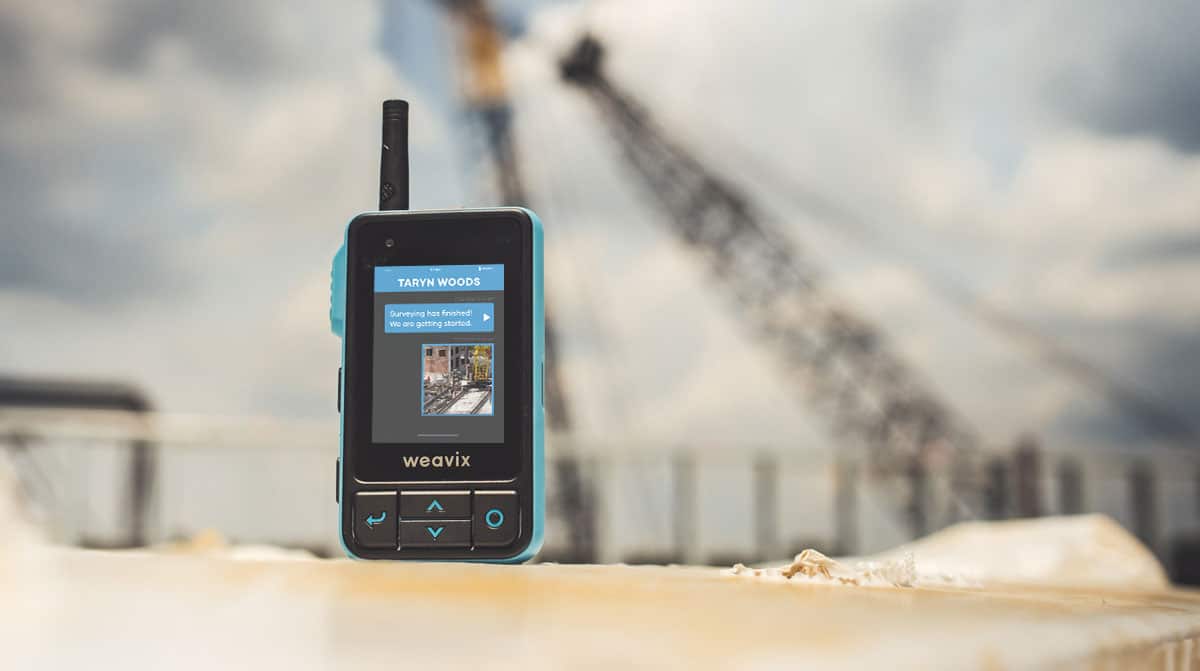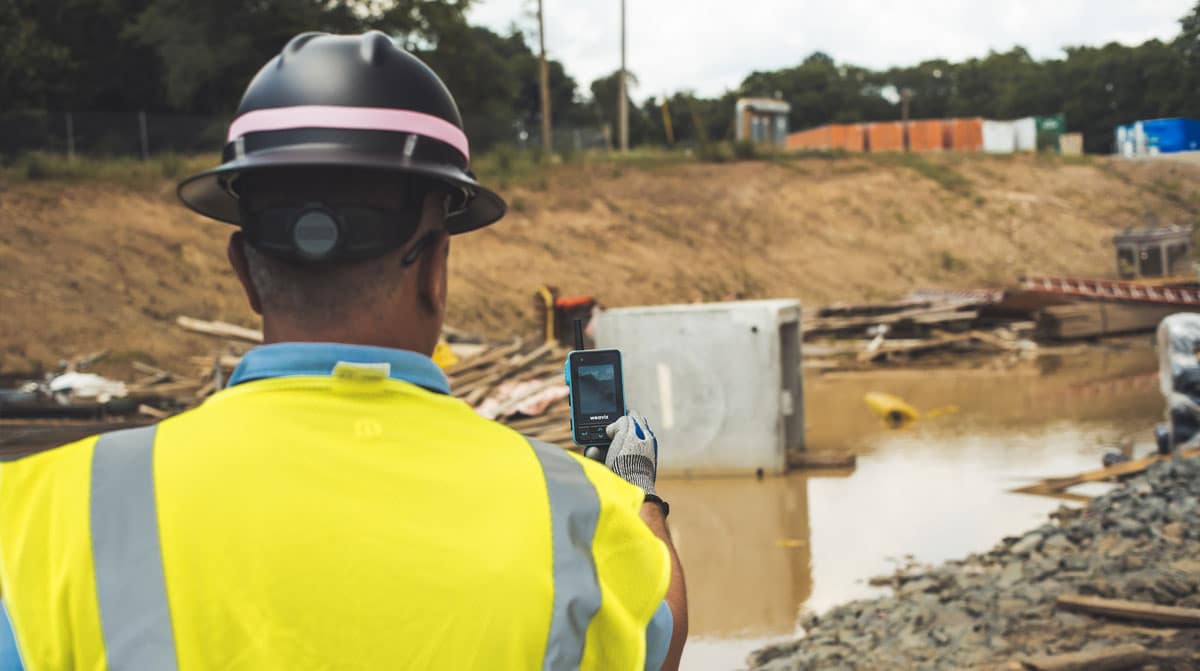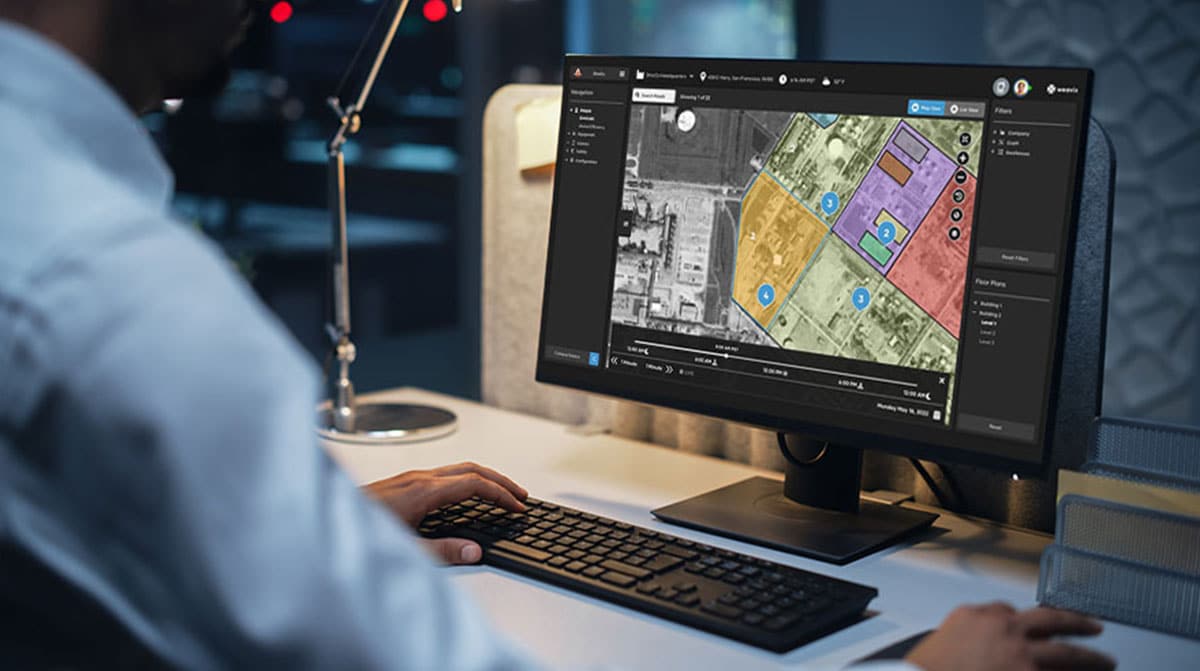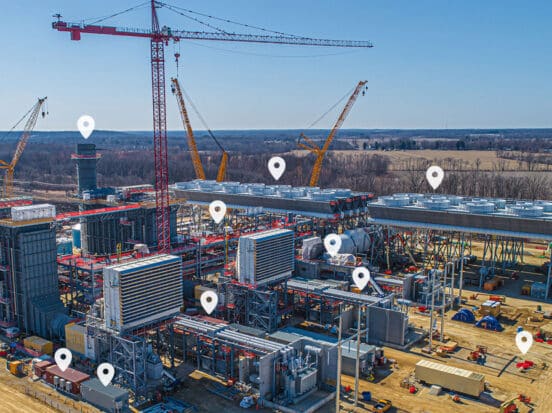Coordinating teams across large sites or remote environments quickly becomes chaotic without reliable communication or real-time location awareness. Many frontline managers struggle to keep workers safe and connected when traditional radios lack crucial features or cell service drops out.
Walkie-talkies with GPS solve these challenges by combining instant two-way voice with precise location tracking in one rugged device, streamlining both communication and workforce visibility.
In this guide, you’ll learn how to set up and use a GPS walkie-talkie, what features matter most, and how these devices improve safety and productivity.
Key highlights:
- A GPS walkie-talkie is a two-way radio with built-in location tracking that improves team visibility, coordination, and safety on the frontline.
- Walkie-talkies with GPS help managers monitor workers in real time, reduce response times during incidents, and keep operations compliant.
- Using a GPS radio with geofencing, alerts, and man-down features supports accountability and faster decision-making in the field.
- The Walt® Smart Radio System by weavix® combines GPS tracking with advanced safety and communication tools in one rugged device built for industrial teams, helping them respond faster to emergencies and eliminate blind spots.
What Is a GPS Walkie-Talkie?
A GPS walkie-talkie is a handheld two-way radio that integrates Global Positioning System (GPS) technology, allowing users to communicate wirelessly and share their real-time location. This system improves team coordination and safety — especially in environments where traditional cellular networks are unreliable or unavailable.
In practice, walkie-talkies with GPS offer much more than just location tracking. Features such as geofencing, alerting systems, and safety protocols provide security and operational insight across job sites of all types. Enhanced durability, privacy controls, and hands-free operation round out the offering, making GPS walkie-talkies essential for frontline teams who need to stay both connected and visible in the field.
By combining reliable communication with real-time location awareness, GPS-enabled walkie-talkies support industries such as construction, manufacturing, logistics, and more.
Keep reading: How to pick the best two-way radios for construction sites

Key Features of a GPS Radio
The key features of a GPS radio improve worker safety, streamline compliance, and provide supervisors with real-time insights to make faster decisions..
Below is an overview of the top features of a two-way radio with GPS trackingand their business value.
| Feature of a GPS Radio | How it Works | Why It Matters in Industrial Settings |
|---|---|---|
| Geofencing Technology | Uses GPS to define virtual boundaries. Alerts trigger when a device enters or exits a set area | Helps keep workers in safe zones, automates compliance monitoring, and secures access to sensitive areas |
| Alerting System | Sends instant notifications and location data during emergencies | Enables rapid incident response, helps emergency teams coordinate, and supports lone-worker safety |
| Man-Down System | Detects lack of movement or abnormal positioning and sends a location-based alert | Promotes worker safety, ensures quick help for incapacitated employees, and reduces emergency response times |
| Tap-and-Go Authentication | Allows secure, contactless access to the GPS radio system | Increases security, streamlines login during shift changes, and prevents unauthorized device use |
| Private Cellular Network | Creates a dedicated network, independent from public cellular services | Delivers reliable communication in remote areas and ensures secure, consistent connectivity |
| AI Language Translation | Uses artificial intelligence for real-time, multi-language voice translation | Connects multilingual teams, reduces translation errors, and boosts collaboration across the workforce |
| Dictation and Text-to-Speech | Converts speech to text (and vice versa) for flexible communications | Supports documentation, aids in noisy environments, and increases accessibility for all team members |
Keep reading: What to consider in a digital communication platform
Benefits of a Walkie-Talkie with GPS in Frontline Work
Using GPS walkie-talkies gives supervisors and safety leaders real-time visibility of their teams across large or hazardous worksites. Instead of relying on manual check-ins or guesswork, managers can instantly see where workers are, respond faster to incidents, and confirm that employees remain in safe zones. This added visibility improves safety, reduces downtime, strengthens accountability, and supports compliance with workplace regulations.
>>>> Learn how the Walt Smart Radio System sets the standard for modern industrial communication.
Key benefits of a walkie-talkie with GPS for frontline operations include:
Enhanced Worker Safety
With a walkie-talkie with a GPS locator, workers can be monitored in real time, helping teams respond instantly to safety incidents or emergencies. Research shows why this matters: in a Harvard Business Review survey of 76 executives across industries, 94% claimed safety was a core value, but only 17% said it was part of their company strategy. GPS radios give leaders a practical way to close that gap by making safety measurable and actionable on the ground.
Improved Communication and Coordination
Teams use GPS-powered communication to direct resources more efficiently, manage incidents, and avoid miscommunication across large or complex sites. This reduces error rates and operational delays.
Increased Accountability
By using a two-way radio with GPS tracking, managers can confirm whether employees are in the right locations, verify that safety protocols are being followed, and track movement during shifts. This accountability builds trust across teams while also providing leaders with a verifiable record of compliance in high-risk environments.
Operational Efficiency and Cost Savings
GPS radios automate resource assignments and help allocate teams quickly, reducing wasted time and unnecessary travel. For example, dispatchers can route tasks faster and streamline logistics.
Regulatory and Compliance Support
Detailed reporting from GPS radios provides a reliable record of worker movements, shift compliance, and emergency responses. These logs make it easier to demonstrate adherence to workplace safety laws and labor regulations, while also supporting investigations if an incident occurs.
Keep reading: 10 reasons every worker needs an industrial radio

Top Use Cases for a Walkie-Talkie with Location Tracking
Walkie-talkies with location tracking are valuable across industries where visibility, safety, and coordination are top priorities. From manufacturing plants and construction sites to logistics hubs and energy facilities, these devices give supervisors real-time awareness of worker locations and site conditions.
Here are examples of how GPS-enabled radios are applied across different industries:
| Industry | Use Case for a Walkie-Talkie with Location Tracking |
|---|---|
| Manufacturing | Track maintenance and safety crews in real time during equipment failures; dispatch the nearest team instantly to reduce downtime and protect workers |
| Food and Beverage Processing | Monitor staff in high-risk zones such as refrigeration units or contamination areas; ensure compliance with safety rules and coordinate rapid response to spills |
| Construction | Locate workers and vehicles across active sites; keep teams out of restricted areas and maintain compliance with safety regulations in dynamic, high-risk environments |
| Oil and Gas | Provide oversight for crews in remote drilling or refinery sites; support emergency evacuations with location data during hazardous incidents |
| Aerospace | Direct technicians inside large assembly plants; track movement of specialized tools and parts to prevent delays in production |
| Hospitality | Assign staff more efficiently across large hotels or venues; locate security and service personnel instantly to improve guest response times |
| Pharmaceutical and Chemical Manufacturing | Verify worker presence in designated safe zones; speed up response during chemical leaks or plant emergencies by directing nearby teams |
Adding GPS to walkie-talkies supports operational efficiency and keeps frontline teams safe, visible, and accountable.
Keep reading: Top benefits of workforce danger alert systems
How to Connect Your Workforce with GPS Radios: A Quick Guide
Getting started with GPS radios doesn’t have to be complex. With the right setup, organizations can quickly improve visibility and coordination across their worksites. Here’s how to make the transition:
1. Choose the Right Two-Way GPS Radio for Your Environment
Not all worksites have the same needs. A manufacturing plant, construction zone, and oilfield face very different challenges, so choosing the right device is the first step. Look for:
- Rugged design to withstand drops, dust, and water
- Safety certifications for hazardous environments
- Battery life that lasts an entire shift or supports hot-swapping
- Selecting the right GPS and walkie-talkie combination ensures workers stay connected without compromising safety or durability.
2. Set up GPS Functionality
Once devices are in place, configure the GPS features so they deliver value from day one. Modern GPS radios can be set up with geofencing, man-down alerts, and real-time tracking, but each feature needs proper configuration to be effective.
Start by:
- Defining geofencing zones: Create boundaries for safe zones, restricted areas, or hazardous locations so alerts trigger automatically if workers enter or exit.
- Adjusting sensitivity for man-down alerts: Calibrate motion and tilt sensors so they accurately detect falls or long periods of inactivity without triggering false alarms.
- Setting location update intervals: Decide how often radios should transmit GPS data (e.g., every 30 seconds vs. every 5 minutes), balancing accuracy with battery life.
- Assigning supervisor dashboards: Ensure managers have access to mapping and alert tools so they can monitor locations in real time and respond quickly.
- With these steps in place, GPS radios provide not just location visibility, but a reliable safety net that supports compliance and rapid emergency response.
3. Create Specific Communication Channels
Different teams often require different lines of communication. By setting up dedicated channels, leaders ensure maintenance, safety, and operations crews get the updates they need without unnecessary noise. With walkie-talkies with GPS, alerts and location data can also be routed directly to the right group, improving coordination and response times.
4. Integrate the GPS Two-Way Radio with Your Existing Operations
A radio with built-in GPS should complement your current systems, not complicate them. Integrate GPS radios with scheduling tools, dispatch systems, or safety protocols so communication and location tracking become part of everyday workflows. This alignment helps teams adopt the technology faster and reduces disruption during rollout.
5. Train and Equip Your Team
Technology is only effective if workers know how to use it. Training should include how to send alerts, respond to messages, and understand location-based notifications. With a walkie-talkie with a GPS locator, simple, hands-on sessions are often enough to build worker confidence and ensure adoption.
6. Use Data to Enhance Workforce Productivity
GPS-enabled radios generate valuable data about worker movement, response times, and site coverage. With a walkie-talkie with location tracking, managers can analyze this data to reduce inefficiencies, optimize resource allocation, and improve safety compliance. Over time, these insights drive measurable gains in productivity and cost savings.
Keep reading: How to make the case for two-way radio systems

How a Walkie-Talkie with GPS Tracking and Geofencing Works
A walkie-talkie with GPS tracking combines instant voice communication with real-time location monitoring. Geofencing lets you map digital boundaries, triggering automatic alerts or safety actions if a device crosses into or out of a set area. This allows managers to check that workers stay in assigned zones and receive notifications about potential safety breaches or emergencies the moment they happen.
A typical setup includes:
- An integrated GPS receiver in each device
- Geofence mapping via dispatch software
- Real-time location sharing with supervisors and coworkers
- Automatic alerts for boundary breaches or unauthorized access
Do All Walkie-Talkies Have GPS?
Not all walkie-talkies include GPS functionality. The majority of traditional models are built only for voice communication, without any integrated tracking. However, more modern two-way radio systems increasingly offer GPS as a core feature, often as part of advanced digital radio or DMR radio solutions.
Teams requiring workforce visibility or real-time location tracking should confirm GPS availability and integration when selecting new devices such as smart radios.
What Is the Farthest a GPS Walkie-Talkie Can Reach?
The maximum communication range a GPS walkie-talkie can reach depends on the radio technology and access to supporting networks:
In open terrain, consumer-grade models can reach between 2 to 5 kilometers; advanced units may go as far as 15 kilometers in optimal conditions
In dense urban or industrial sites, range can drop to 1 to 2 kilometers due to interference
Some GPS radios use private cellular, LTE, or satellite technology for nationwide or even global coverage — but the GPS itself only determines your geographic location. The true range for talking depends on the device’s radio or network capabilities, not the GPS module alone.
Keep reading: Digital vs analog radio system: everything you need to know
Give Your Workers More than a GPS Two-Way Radio: Empower Them with Walt
Empower your frontline workforce with more than just basic walkie-talkies with GPS. The Walt Smart Radio System by weavix transforms team communication and safety with built-in GPS, advanced alerting, and real-time collaboration tools — all in a single rugged device. Walt connects your entire team, even in harsh and complex environments, giving leaders total visibility, faster response, and measurable productivity gains.
Key features include:
- Integrated GPS tracking and geofencing for real-time location management and instant alerts
- Safety-first capabilities, such as a man-down button and a customizable alerting system
- Seamless collaboration through a private cellular network, AI language translation, and hands-free operation
- Software updates and feature enhancements delivered over the air, keeping your hardware future-ready and secure
Unlock the next generation of location-aware workforce communication.
For a tailored solution, contact us.


